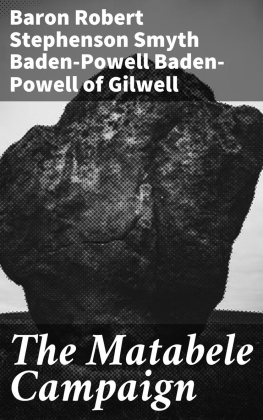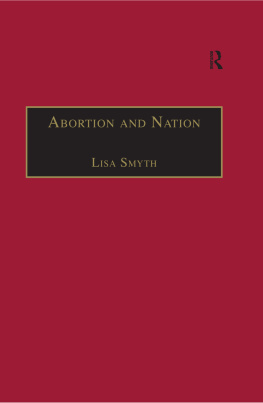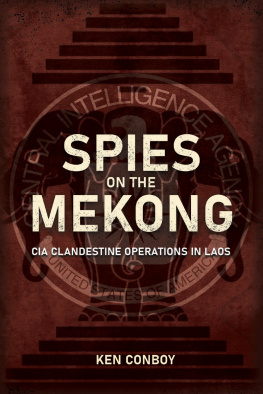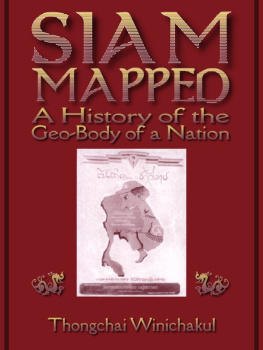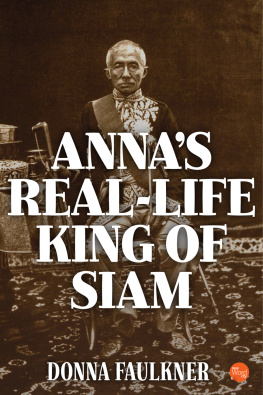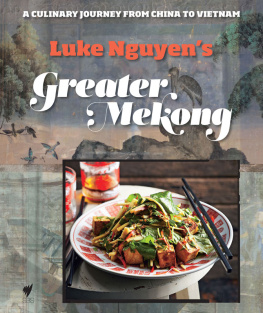NOTES OF A JOURNEY ON THE UPPER MEKONG, SIAM.
BY H. WARINGTON SMYTH, OF THE ROYAL DEPARTMENT OF MINES AND GEOLOGY, BANGKOK.
WITH MAPS AND ILLUSTRATIONS.
PUBLISHED FOR
THE ROYAL GEOGRAPHICAL SOCIETY
BY
JOHN MURRAY, 50, ALBEMARLE STREET, LONDON.
1895.
[Illustration: THE RAPIDS AT THE GATES OF CHIENG KONG, MEKONG RIVER.]
PREFACE.
I have put together the following account of a recent journey made for the Siamese Government to the Mekong valley, chiefly for the reason that at the present moment, when the French have "rectified" their boundaries on the north and east of Siam to the extent of some 85,000 square miles, more interest than usual will probably be felt in the character of the country and the people, of whom there are not too many reliable accounts to be found. At the same time, I feel very strongly that there are others whose descriptions will be far more valuable than my own, owing to their longer residence in the country, and the greater extent of their explorations. I refer especially to Messrs. McCarthy, Archer, and Beckett, who have done difficult and extensive work in all parts of Siam and the Laos states; and there is certainly no European, and probably no Siamese, that knows so much of the configuration of the north-east as does Mr. McCarthy, who, carried on by an apparently deep love of jungle-life, has aroused the admiration of the Siamese and Laos at Luang Prabang by his hardihood and energy, and the results of whose work were a constant source of admiration to me, as I went on and saw the wildness and difficulty of the country.
The object of my journey was primarily the examination, for the Siamese Government, of a supposed very rich deposit of gems (rubies and sapphires), lately discovered on the left bank of the Mekong, opposite Chieng Kong. My orders were to return by Luang Prabang, Nongkhai, and Khorat, and to visit and report on all mineral deposits of which I could get information, gathering all geological data which were possible. The time allowed was six months, and I was not to leave the general line of march prescribed by more than 60 miles. I need hardly sayand every one who knows what jungle-travelling is will understandthat my programme, to be thoroughly carried through over the large extent of country marked out, might well occupy six years instead of months; and that such a hurried exploration in a country covered densely with forestwhich, next perhaps to snow, is the greatest enemy to the science of geologycould not but be unsatisfactory to one's self.
H. Warington Smyth.
GLOSSARY.
Pak = mouth of a river; e.g. Pak Oo, mouth of river Oo.
Nam = river; e.g. Nam Oo, river Oo (a always long, as in
barn).
Hoay = mountain torrent.
Keng = rapid; e.g. Keng Fapa, Fapa rapid.
Luang = great or chief; e.g. Keng Luang, the great rapid.
Doi or puh = Siam word Kao = hill.
Ban or Bang = house or village (used indiscriminately).
Sala = rest-house.
Muang = town or township, often district or province.
Chow Muang = literally, chief of the township = governor.
Klong = stream or canal.
CONTENTS.
PART I. Bangkok to Muang Nan
PART II. Muang Nan to Muang Chieng Kong
PART III. Muang Chieng Kong to Muang Luang Prabang
PART IV. Luang Prabang (March, 1893)
PART V. Nongkhai to Khorat and Bangkok (April and May, 1893)
Appendix
MAPS AND ILLUSTRATIONS.
The Rapids at the Gates of Chieng Kong, Mekong River
The Meinam below Chainat
Loaded Rice-Boats lying in Bangkok
Rua Pet
Rua Nua
Rua Nua from Fore End
Boat hollowed out of Trunk ready to be soaked in River
Boat opened out over Fire, Ribs and Knees in
Rice-Boats and Floating House, Paknam Pho
A Rice-Boat, flying light
Rice-Raft, Nam Oo
Wat Chinareth (Central Tower from West)
A Sala in the Nan Forests
Khorat Plateau. Entrance to Forest Dong Phya Yen
Gorge Nam Pgoi
The Paddy-Fields, Hin Valley
Wat Ben Yeun, M. Sa
East Gate of Nan
Laos Bag, of Striped Cloth
Kao Neo Wicker Baskets
Axe for hollowing Boats
Dipper for Water
A Hill Monastery, M. Le
View from M. Le, looking north-west across the Nam Nan and Watershed
of Meinam Khong
MapRoute from Muang Ngob on the Nam Nan to Muang Chieng Kong on
the Mekong River
A Gem-Digger's Clearing, Chieng Kong
Camp at the Fa Pa Rapids
One of our Elephants, with Howdah on
The Leading Mule
A Head ManStern View
A Head ManSide View
A HawPacks dismounted
Laos Boat
Illustration of Oar and Steering-Gear
Double Boat
Village above Paku, Mekong
Forty-Five Feet Boat, Nam Oo
MapPart of the Mekong
Khache Hill Clearings; Rapids above Pak Beng, Mekong
Dhp and Sheath
Jungle Knives
Mouth of Nam Suung, above Luang Prabang
Approach to Luang Prabang from North
Wat Chieng Tong
Pa Chom Si, Luang Prabang
Plan of Luang Prabang and River
Stone Implements
Government Offices, Luang Prabang
Keng Kang, Nam Oo. The Plunge off the Left Bank
Keng Luang
Ascending Keng Luang, Nam Oo
Fishing Stakes and Shelters, Nam Oo
Rudder
Boats Fishing
Last of the Hills above Wieng Chan
The Ruins of Wat Prakaon, Wieng Chan
Niche and Statue
South-West Angle, Wat Susaket, Wieng Chan
Bell
Bell-Clapper and Joint
Bamboo Bell
Four-Sok Kan (1 Inch to Feet)
Two-Sok Kan
Air-Chamber
Kien
The North Gate and Nam Nun, Khoraat
MapThe Central Part of the Kingdom of Siam
NOTES OF A JOURNEY ON THE UPPER MEKONG, SIAM.
PART I.
BANGKOK TO MUANG NAN.
Early in December, 1892, we left Bangkokmyself, three Siamese assistants, and a sergeant's guard as escort, and coolies. At Muang Chainat, owing to the rapid fall of the river, I had to send back the Navy launch, which was drawing 3 feet 6 inches; a month earlier she might have got nearly up to M.[1] Pechai. At Paknam Pho, where the Nam Pho and Meiping meet, after a good deal of bargaining I secured a rua nua, or north-land boat, to take me on. Boat-travelling in Siam is much the same everywhere; and in their boat-life, it may be said, the Siamese have attained a high degree of civilization. Very often the boat is the home of the family, and after the rains they moor alongside the bank and cultivate tobacco, cotton, or melons on the slope on which the rich loam of the floods has settled down; after the rice harvest they will set out laden with paddy for Bangkok, returning later on with salt or other luxuries from the south. The Chinese, who are the most energetic people in the country, carry on extensive trading in this way. They use a very large double-ended kind of boat, known as "rice-boat," which has a long cylindrical roof of closely plaited work impervious to rain, extending from just before the helmsman to within 10 feet of the bows, where the two or three oarsmen toil at the long oars. As in all the Siamese boats, the oar is slung in a grommet, which is turned round the top of a small pole firmly let into the gunwale at the lower end. This gives the end of the oar sufficient height inboard, and the oarsman stands to his work facing forward, the outer hand on a small handle turned at right angles to the oar, as in the Chinese sampans one sees in the straits. With a big heavy boat, the action, with a sharp jerk at the end of the stroke, is not pretty; but in the small


